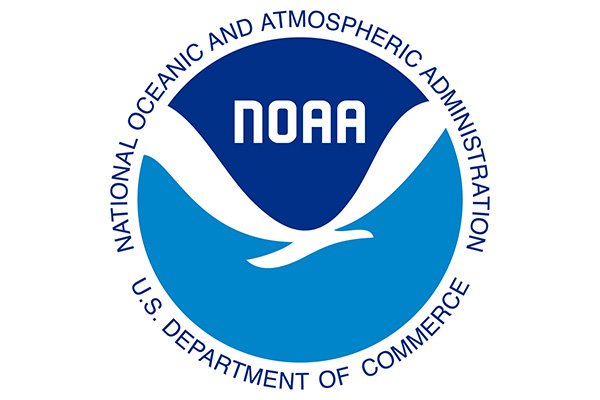Understanding the Problem and Setting Goals
Proactively addressing climate risks.
Fisheries in the Northeast US face a range of climate change impacts. To prepare for future change and develop adaptation actions, an important first step is to understand the parts of the fishery system that will be a focus for adaptation and to consider the goals that are important to the fishery and community.
In brief:
- Climate planning and adaptation involves buffering negative impacts of climate change and capitalizing on beneficial opportunities.
- Before selecting or implementing adaptation options, it can be useful to identify broader community goals and priorities, helping to ensure that incremental resilience actions contribute to a broader vision.
- Adaptation actions are most effective when they consider ecological, social, economic, and governance dimensions of the fishery and focus on the key elements, actors, and relationships within it.
Fisheries in the Northeast US are experiencing many climate change impacts, from warming seas and rising sea levels to shifting species distributions, changes in abundance of harvested species, and changing interactions with protected species. Proactively planning for these current and future impacts can help reduce risk and prepare for further change, which may be necessary to achieve the goals that are important to a fishery or community.
Individuals, businesses, entire supply chains, fishing-dependent communities, and institutions can all engage in adaptation. Adaptation actions can address short and long term impacts, and while some impacts may be more uncertain than others, proactively addressing climate risks as opposed to reactively responding can be more cost-effective and allow for more deliberative consideration of a wider range of options.
Climate change doesn't impact people and ecosystems in the same ways. Differences in the nature and magnitude of impacts, as well as in response capacities and capabilities, means that places and groups experience climate effects differently. As such, adaptation actions that work for one group, place, or system may not work for another.

Given these points, before selecting or implementing adaptation actions, it is valuable to (1) identify the components (e.g. actors, species, sectors, relationships) of the fishery system or community that will be the focus of adaptation actions, (2) determine goals for the fisheries within the community, and (3) understand the range of impacts that may be faced.
This resource hub provides information regarding climate hazards, exposure, fisheries impacts, and adaptation strategies within the Northeast US. To help with the tasks of bounding the system of focus and identifying fishery goals, we refer users to the US Climate Resilience Toolkit (Step 1) and the Climate Resilient Fisheries Planning Tool (Steps 1 + 2), which provide a range of resources and detailed information.
Key considerations for these tasks include:
- Identifying ecological, social, economic, and governance dimensions of the fishery system and the key elements, actors, and relationships to include can help focus adaptation actions on those that are most likely to be effective and efficient.
- Determining motivations (the ‘why’) and goals (the ‘what’ and ‘for whom’) for adaptation are important for building a shared vision, which supports long-term success. This includes considering people’s values, perceived benefits from the fishery, and current and future aspirations for what the fishery could look like.
- Developing effective stakeholder engagement mechanisms is critical to ensure diverse perspectives, values, and ideas are heard and accounted for throughout the whole adaptation process.
- Centering equity considerations throughout the adaptation process can improve fairness, reduce conflict, and increase buy-in, which are integral to the long-term success of adaptation.
- As adaptation is a continuous process, goals and actions will need to be flexible to enable effective responses to changing and uncertain circumstances and conditions.
Understanding climate hazards
The next step in climate adaptation planning is understanding climate hazards and exposure levels.
Go back to Climate Adaptation Planning for Fishing Communities homepage.
Staff Contact
Please contact Dr. Kathy Mills with any questions.
Project Sponsor
The information within this site was funded and supported by the NOAA Climate Program Office through the Coastal and Ocean Climate Applications program under awards NA15OAR3410120 and NA19OAR4310384.
Read More
-
![FishSCORE2030: Supporting Climate-Resilience in Fisheries]()
FishSCORE2030: Supporting Climate-Resilience in Fisheries
GMRI Research Scientist Dr. Kathy Mills is leading a new collaborative effort to build an international network of scientists, stakeholders, and practitioners who will identify …
Tidings
-
![New: Climate & Fisheries Planning Tool]()
New: Climate & Fisheries Planning Tool
The Science for Nature and People Partnership (SNAPP) working group on climate-resilient fisheries, led by GMRI Senior Research Scientist Dr. Kathy Mills, recently developed a …
Tidings
-
![Gulf of Maine, Explained: Storms and Coastal Flooding]()
Gulf of Maine, Explained: Storms and Coastal Flooding
In this edition of Gulf of Maine, Explained, GMRI Postdoctoral Researcher and coastal hazards expert Dr. Hannah Baranes talks about how we can use the …
Gulf of Maine, Explained
-
![2023 Research Progress Update]()
2023 Research Progress Update
Each year, to keep you updated on our research team's progress, we develop a report showcasing some of our lab's achievements. More broadly, this report …
Reports




